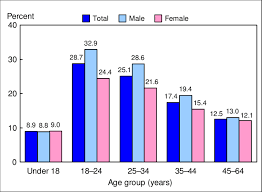On August 25, 2004, a concerning statistic was released, revealing that the number of Americans without health insurance had increased. This data shed light on a growing issue in the United States, highlighting the challenges and gaps in the country's healthcare system. The report, released by the U.S. Census Bureau, indicated that the number of uninsured Americans had risen to approximately 45 million people in 2004. This represented an increase of about 1.4 million individuals compared to the previous year. The data underscored the fact that a significant portion of the population lacked access to adequate healthcare coverage, leaving them vulnerable to financial burdens and limited access to medical services. The increase in the number of uninsured individuals was concerning for several reasons. Firstly, it highlighted the disparities in access to healthcare across different segments of the population. Many of those without health insurance were low-income individuals and families who struggled to afford coverage or did not have access to employer-sponsored plans. This left them at a higher risk of facing financial hardship or foregoing necessary medical treatment. Secondly, the rise in the number of uninsured Americans pointed to systemic issues within the healthcare system. It highlighted gaps in coverage and the limitations of existing programs aimed at providing healthcare to vulnerable populations. The report prompted discussions about the need for comprehensive healthcare reform and the importance of ensuring that all Americans have access to quality and affordable healthcare. The lack of health insurance coverage has wide-ranging implications for individuals and society as a whole. Without insurance, individuals are less likely to seek preventative care, leading to the potential for undiagnosed or untreated health conditions. This can result in higher healthcare costs and a strain on emergency services when individuals seek medical attention for conditions that could have been prevented or managed more effectively with regular care. Furthermore, the increase in the number of uninsured Americans highlighted the financial burden placed on hospitals and healthcare providers who often bear the cost of treating uninsured patients. This burden can lead to higher healthcare costs for individuals with insurance and strain the resources of healthcare institutions, particularly those serving underserved communities. The release of this data in 2004 sparked renewed discussions and debates about healthcare reform in the United States. It brought attention to the need for policies and initiatives aimed at expanding access to affordable healthcare coverage for all Americans. The issue of healthcare access and affordability has remained a prominent topic in subsequent years, with ongoing efforts to address the challenges faced by uninsured individuals and families.
25 Aug, 2004 Americans Without Health Insurance Increase
